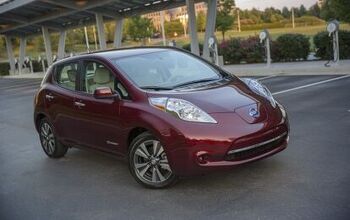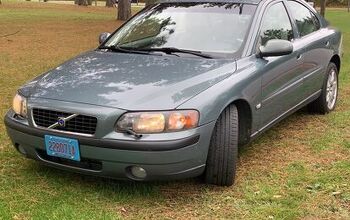Mitsubishi Might Share Future Pickup Platforms With Nissan

Mitsubishi Motors needs a pickup truck for the U.S. and Nissan wants a cheaper one for the global market. While the Red Diamonds’ Raider filled a ten year gap in the company’s lineup after the American discontinuation of the Mighty Max in 1996, sales were disappointing and production ended back in 2009. Now Mitsubishi and its new parent Nissan are investigating joint production of pickup trucks in Southeast Asia as they hunt for savings within the Renault-Nissan partnership.
The two Japanese automakers may combine the technical basis and eventual production of the future replacements for the South Asian-built Nissan Navara and Mitsubishi Triton, Mitsubishi chief operating officer Trevor Mann said in an interview at the Geneva car show.
“If you look at our cost performance in that region, we are the benchmark within the alliance,” Mann told Reuters. “Our four-by-four technology, our cost base on pickups is better than Nissan’s.”
That means Mitsubishi’s pickup architectures are likely to underpin subsequent Nissan models, said Mann, who was assigned by alliance head Carlos Ghosn to turn the failing Mitsubishi around after Nissan dropped $2.3 billion for a 34 percent controlling stake last October.
While Nissan and Mitsubishi both produce frame-based pickups and cars, the vehicles have elemental manufacturing and design differences. Moving to shared architectures would allow the Mitsubishi factory to focus on pickups while the Nissan plant continues to produce cars and SUVs, increasing productivity and lowering costs for both brands, Mann said.
Although, he was also careful to say that nothing had been set in stone. The current Navara and Triton models were launched in 2014 and neither are due for replacement until 2022, meaning development decisions should still be a couple years away. However, under a common platform it might be easier to get Mitsubishi trucks back into other markets — maybe even the United States and Canada if the cooperative truck platform extends beyond Asian assembly.
[Image: Mitsubishi Motors]

A staunch consumer advocate tracking industry trends and regulation. Before joining TTAC, Matt spent a decade working for marketing and research firms based in NYC. Clients included several of the world’s largest automakers, global tire brands, and aftermarket part suppliers. Dissatisfied with the corporate world and resentful of having to wear suits everyday, he pivoted to writing about cars. Since then, that man has become an ardent supporter of the right-to-repair movement, been interviewed on the auto industry by national radio broadcasts, driven more rental cars than anyone ever should, participated in amateur rallying events, and received the requisite minimum training as sanctioned by the SCCA. Handy with a wrench, Matt grew up surrounded by Detroit auto workers and managed to get a pizza delivery job before he was legally eligible. He later found himself driving box trucks through Manhattan, guaranteeing future sympathy for actual truckers. He continues to conduct research pertaining to the automotive sector as an independent contractor and has since moved back to his native Michigan, closer to where the cars are born. A contrarian, Matt claims to prefer understeer — stating that front and all-wheel drive vehicles cater best to his driving style.
More by Matt Posky
Latest Car Reviews
Read moreLatest Product Reviews
Read moreRecent Comments
- Bkojote Allright, actual person who knows trucks here, the article gets it a bit wrong.First off, the Maverick is not at all comparable to a Tacoma just because they're both Hybrids. Or lemme be blunt, the butch-est non-hybrid Maverick Tremor is suitable for 2/10 difficulty trails, a Trailhunter is for about 5/10 or maybe 6/10, just about the upper end of any stock vehicle you're buying from the factory. Aside from a Sasquatch Bronco or Rubicon Jeep Wrangler you're looking at something you're towing back if you want more capability (or perhaps something you /wish/ you were towing back.)Now, where the real world difference should play out is on the trail, where a lot of low speed crawling usually saps efficiency, especially when loaded to the gills. Real world MPG from a 4Runner is about 12-13mpg, So if this loaded-with-overlander-catalog Trailhunter is still pulling in the 20's - or even 18-19, that's a massive improvement.
- Lou_BC "That’s expensive for a midsize pickup" All of the "offroad" midsize trucks fall in that 65k USD range. The ZR2 is probably the cheapest ( without Bison option).
- Lou_BC There are a few in my town. They come out on sunny days. I'd rather spend $29k on a square body Chevy
- Lou_BC I had a 2010 Ford F150 and 2010 Toyota Sienna. The F150 went through 3 sets of brakes and Sienna 2 sets. Similar mileage and 10 year span.4 sets tires on F150. Truck needed a set of rear shocks and front axle seals. The solenoid in the T-case was replaced under warranty. I replaced a "blend door motor" on heater. Sienna needed a water pump and heater blower both on warranty. One TSB then recall on spare tire cable. Has a limp mode due to an engine sensor failure. At 11 years old I had to replace clutch pack in rear diff F150. My ZR2 diesel at 55,000 km. Needs new tires. Duratrac's worn and chewed up. Needed front end alignment (1st time ever on any truck I've owned).Rear brakes worn out. Left pads were to metal. Chevy rear brakes don't like offroad. Weird "inside out" dents in a few spots rear fenders. Typically GM can't really build an offroad truck issue. They won't warranty. Has fender-well liners. Tore off one rear shock protector. Was cheaper to order from GM warehouse through parts supplier than through Chevy dealer. Lots of squeaks and rattles. Infotainment has crashed a few times. Seat heater modual was on recall. One of those post sale retrofit.Local dealer is horrific. If my son can't service or repair it, I'll drive 120 km to the next town. 1st and last Chevy. Love the drivetrain and suspension. Fit and finish mediocre. Dealer sucks.
- MaintenanceCosts You expect everything on Amazon and eBay to be fake, but it's a shame to see fake stuff on Summit Racing. Glad they pulled it.


































Comments
Join the conversation
I think this is more about the world market than the US. I don't understand why Nissan doesn't just pull the plug on Mitsubishi here; unless there is some real financial wizardry going on in Mitsu's production lines that make those products profitable, there's just no point in continuing to sell them in the US.
"While the Red Diamonds' Raider filled a ten year gap..." Even then, it was just a workup of a Dakota, built right in Michigan. Not much Mitsubishi about it.